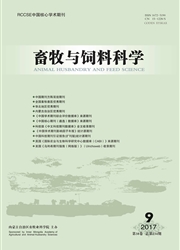

 中文摘要:
中文摘要:
为探讨不同放牧时间对荒漠草原地下生物量的影响,采用方差分析和回归建模的方法对荒漠草原地下生物量进行了系统研究。结果表明,放牧时间(早期、中期和晚期放牧)、根层(0-100 cm层)以及放牧时间和根层的交互作用对群落地下生物量均产生极显著影响,中期放牧时各根层平均地下生物量达到最大;无论哪一时期放牧,第一根层的地下生物量均为最高,且随土层加深呈递减变化趋势;构建统一的拟合预测模型显示,早、中、晚放牧小区拟合度均接近或达到90%;中期放牧有利于维持较大的地下生物量,对地上种群自身的生长发育及其抵抗干旱少雨的自然环境有利。
 英文摘要:
英文摘要:
In order to understand the impact of grazing time on under-ground biomass of plant communities in desert steppe,variance analysis and regression modeling were used to systematically assess the under-ground biomass in desert steppe.The results showed that grazing time(early,mid-term and late stage),root layer(0-100 cm) and the interactions between grazing time and root layer had very significant impact on the under-ground biomass of plant communities,and the highest amount of average under-ground biomass was observed in mid-term stage grazing in all root layers;the first root layer had the highest amount of under-ground biomass in all stages of grazing time,and the under-ground biomass was reduced with the increase of root layer depth.The fitting predictive model established in this study showed that the fitting degree of paddocks in early,mid-term and late stage grazing approached or reached 90%;mid-term grazing was beneficial to maintaining higher amount of underground biomass and was also favorable to the growth and development of the above-ground plant communities and to improve their drought resistance.
 同期刊论文项目
同期刊论文项目
 同项目期刊论文
同项目期刊论文
 期刊信息
期刊信息
